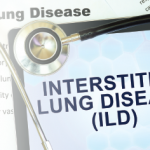Side Effects
Most importantly, nintedanib is not a benign therapy. Treatment caused increased rates of diarrhea (75.7% vs. 31.6% placebo, number needed to harm [NNH] 2), vomiting (24.7% vs. 10.4% placebo, NNH 7) and weight loss (11.8% vs. 4.2% placebo, NNH 13). Many patients with systemic sclerosis can ill afford such side effects. In this trial, the rate of events that were “incapacitating or that caused an inability to work or to perform usual activities” was high (18.1% vs. 12.5% placebo, NNH 17.9). In the real world, with less intensive monitoring, it could be even worse.
Even accepting a low bar for a minimal clinically important difference, 13 patients would need to be treated with nintedanib for 1 to benefit.
Target Its Use
Selecting patients for therapy appropriately may mitigate these issues. The modified Rodnan skin score did not differ between groups, and nintedanib should not be offered as a treatment for skin disease. Limiting use to patients with diffuse systemic sclerosis or MMF intolerance may further focus treatment on the population most likely to benefit.
Conversely, nintedanib could be avoided in patients with low body mass index who can least afford weight loss. Such an approach would substantially reduce the eligible pool of patients and has not been studied. Physicians should be aware, though, that not all subgroups experienced a statistically significant or clinically meaningful benefit from therapy.
In summary, the benefit of nintedanib is modest at best. In subgroup analysis, patients receiving the standard of care or with limited systemic sclerosis did not significantly benefit. Quality of life did not improve, either with regard to FACIT-Dyspnea or HAQ-DI. The most likely outcome from therapy for the majority of patients will be adverse events. Strategies to mitigate these risks may help, but they remain untested.
Patients with systemic sclerosis ILD need new options, but rheumatologists should be cautious in offering them nintedanib.
 Michael Putman, MD (@EBRheum), is a clinical instructor of medicine at Northwestern University and a member of the Fellows-in-Training Subcommittee. He is pursuing large vessel vasculitis research on a T32 training grant.
Michael Putman, MD (@EBRheum), is a clinical instructor of medicine at Northwestern University and a member of the Fellows-in-Training Subcommittee. He is pursuing large vessel vasculitis research on a T32 training grant.
References
- Distler O, Highland KB, Gahlemann M, et al. Nintedanib for systemic sclerosis-associated interstitial lung disease. N Engl J Med. 2019 Jun 27;380(26):2518–2528.
- Phase III study showed nintedanib slows the loss of pulmonary function in people living with systemic sclerosis associated ILD (press release). Boehringer Ingelheim.
- Wells AU. Forced vital capacity as a primary end point in idiopathic pulmonary fibrosis treatment trials: Making a silk purse from a sow’s ear. Thorax. 2013 Apr;68(4):309–310.
- Kafaja S, Clements PJ, Wilhalme H, et al. Reliability and minimal clinically important differences of forced vital capacity. Results from the Scleroderma Lung Studies (SLS-I and SLS-II). Am J Respir Crit Care Med. 2018 Mar 1;197(5):644–652.
Note: This article is the opinion of the author and does not necessarily represent the views of the ACR or The Rheumatologist.

